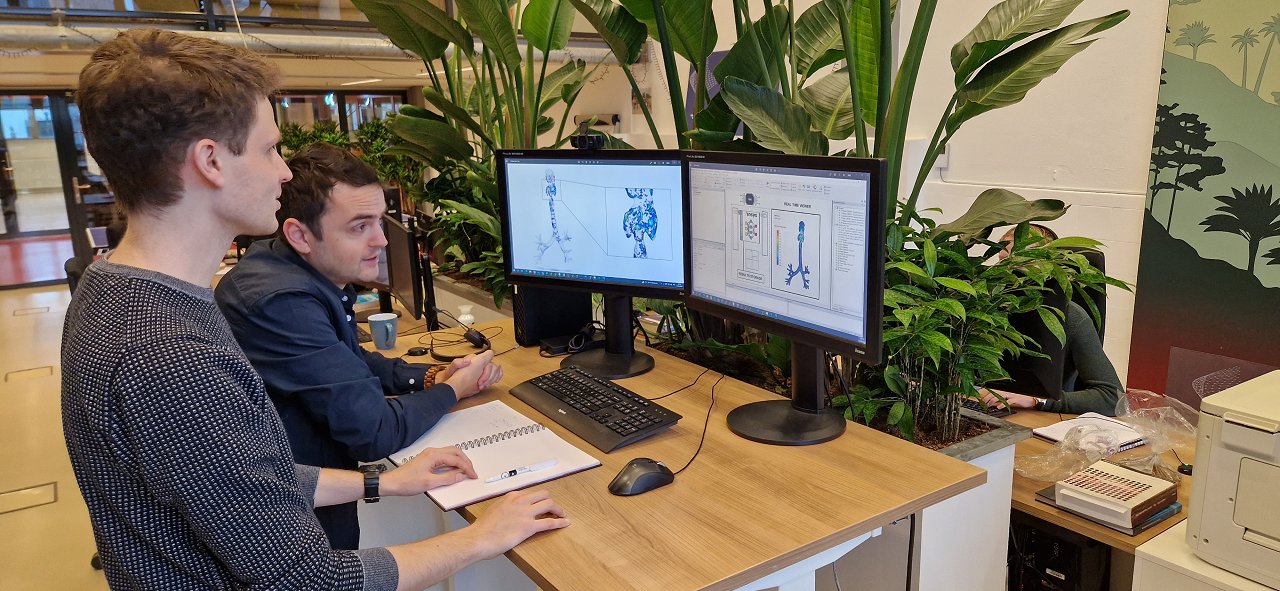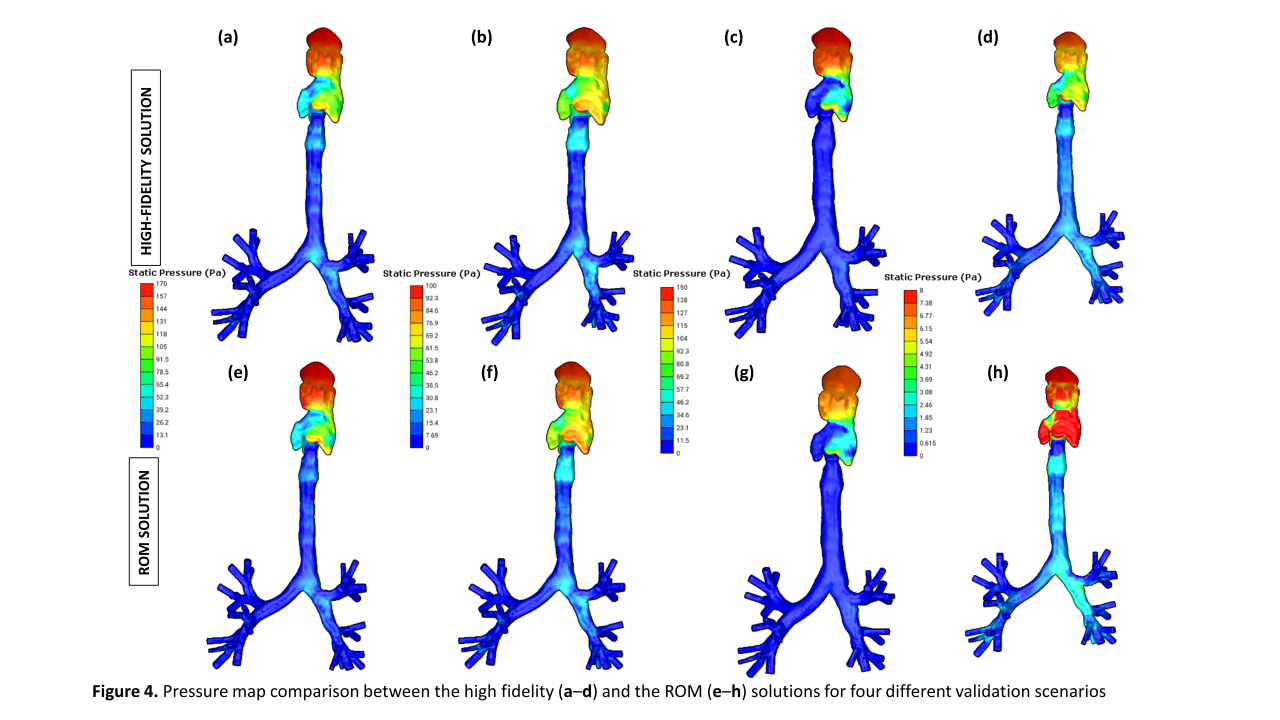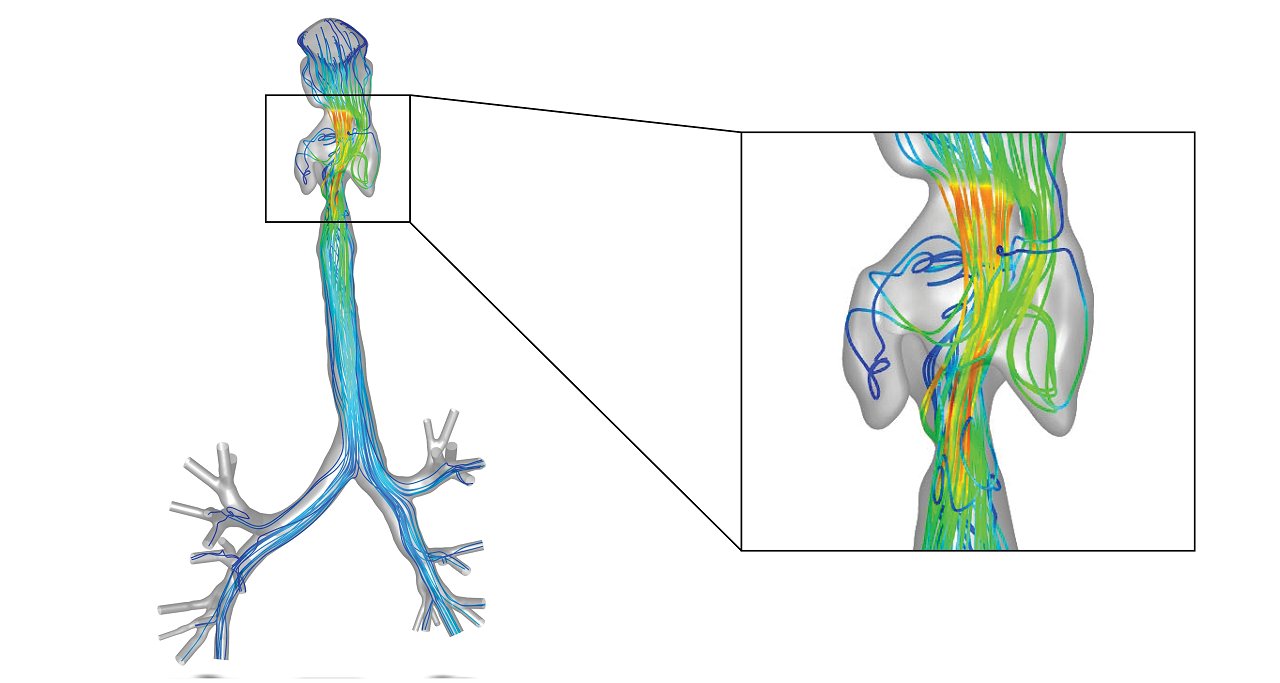A Digital Twin for Airflow and Inhaled Drug Delivery in Human Airways
CFD can be used to assess airflow and improve the efficiency of inhaled drug delivery in human lungs. However, presently this requires patient-specific simulations which can be both costly and time-consuming. The objective of the experiment is to reduce the time scales from weeks to almost real-time and the cost drastically by generating a Digital-twin of the human airway. Once obtained, the Digital-twin resulting from this experiment will be able to reproduce in real-time the airflow in any human airway and inspect the drug delivery process.
SECTOR: Ehealth, Medicine
TECHNOLOGY USED: HPC, CFD Simulation
COUNTRY: The Neatherlands
The challenge
Respiratory diseases such as asthma and Chronic Obstructive Pulmonary Disease (COPD) are caused by narrowing of certain parts of the human airways. The medical treatment for these diseases relies on drug particles being inhaled by the patient. Some patients experience an uneven distribution of drug particles which results in the treatment being ineffective, an increase in side effects, and medicine being wasted.
At present the deposition of inhaled drugs is studied by means of inhaling a radio-labelled drug. This has the negative consequence that the patient is exposed to a certain level of radiation.
One Simulations aims to provide an alternative by performing a detailed CFD simulation of the patient. However, conducting a CFD study for every patient is complex and time consuming due to the manual creation of a 3D model from a CT scan. Even for a skilled CFD expert with access to an HPC system, each study would take several weeks to complete for the entire process, which is a serious disadvantage for urgent medical cases. Associated costs would also be high.
The solution
The solution developed within this experiment (DiTAID) is an easy-to-use Digital Twin (DT) able to predict the particle deposition of inhaled drugs in any human airways. The DT is based on a Reduced Order Model (ROM) that uses mesh morphing technologies on a baseline geometry of human airways to generate 1000 models of human airways and to simulate particle deposition using CFD on a 960 core HPC system. The results of these simulations were then compressed into a ROM drastically reducing the complexity of large-scale numerical simulations while maintaining a good level of detail.
In order to use the DT, a medical image of the patient’s airways is fed into the software which then automatically extracts the shape parameters and reproduces results of a CFD analysis from the ROM to assist in optimising the particle sizes at the click of a button. This avoids time-consuming and expensive CFD workflows.
Business impact, Social impact, Environmental impact
The created DT is a valuable asset for One Simulations since it can offer an alternative to hospitals for harmful radiative testing and/or expensive and time consuming CFD simulations, even in emergency situations. Hospitals/clinics can use the solution directly with the consortium operating the DT or by using a licensing structure. Pharmaceutical companies can also benefit from the DT as it can be used to optimize their drug particles or inhalers. DiTAID will also be offered through consultants who are already selling technical solutions to the healthcare industry, thus easily targeting a large group of customers.
This experiment allows One Simulations to expand into the healthcare industry and to gain valuable experience in creating predictive DT’s, whose principles can be applied to many other industries.
By deploying this unique tool in the market One Simulations expects to hire for 5 high level jobs and reap a yearly turnover increase of €1 million within 5 years.
Benefits
- One Simulations’ unique solution offers a practical clinical alternative to harmful radio-labelled drug testing.
- One Simulations expects to create 5 high level jobs within 5 years and
- Expects a yearly turnover increase of €1 million within 5 years.
Organisations involved:
End User: One Simulations
ISV: RBF Morph
Application expert: TU Delft
Medical expert: Fondazione Toscana Gabriele Monasterio
HPC provider: GrepIT




